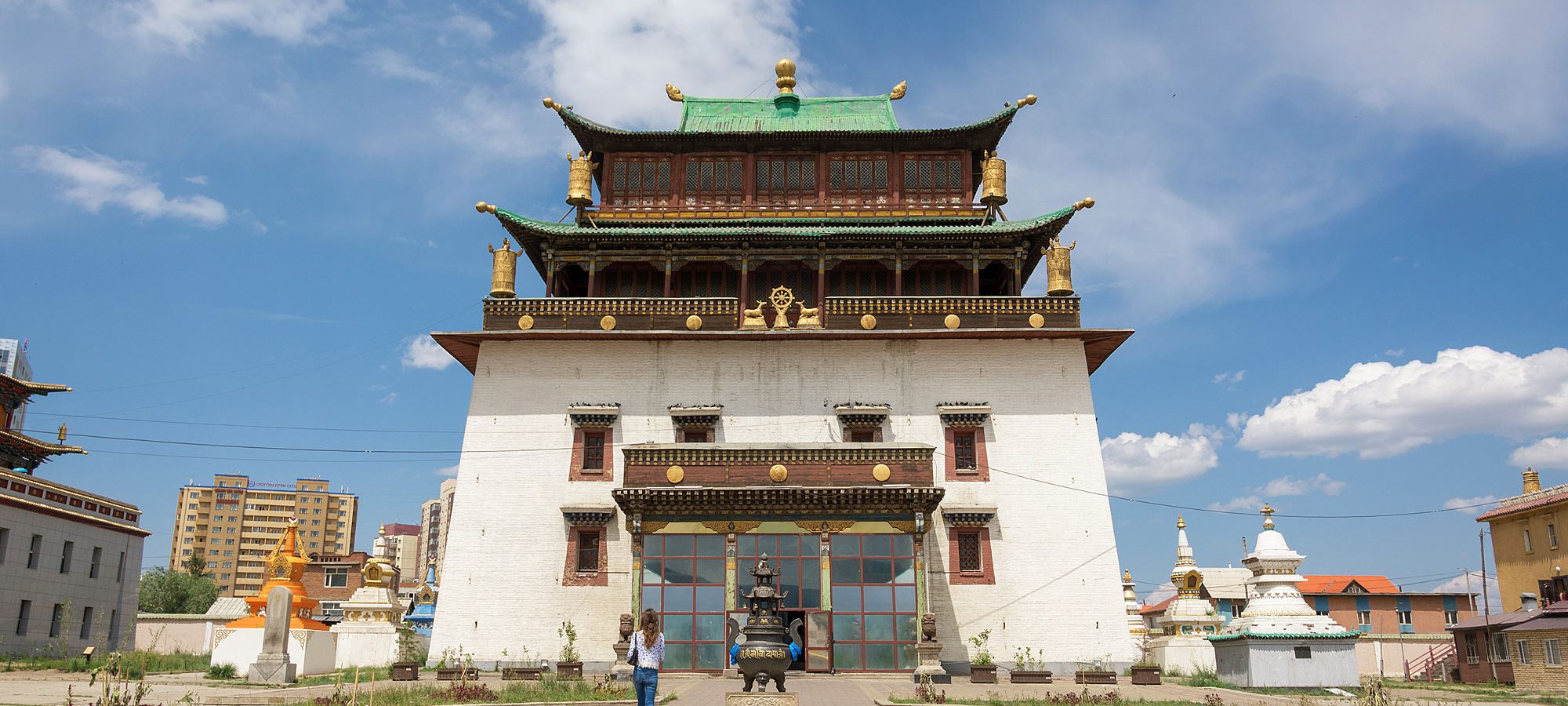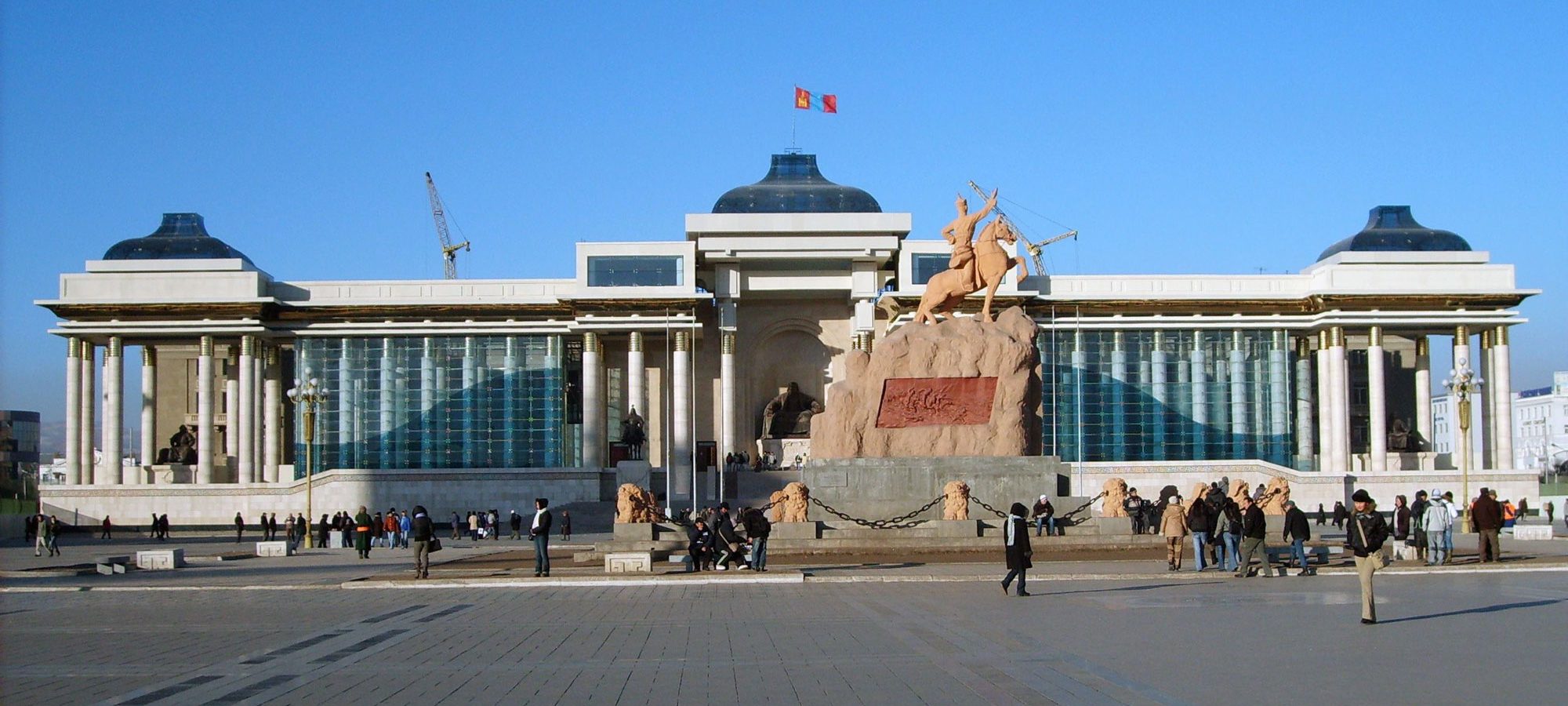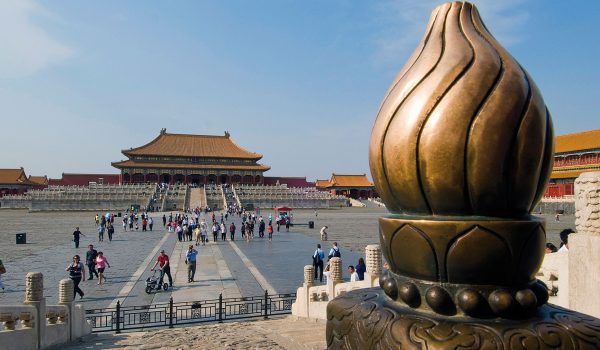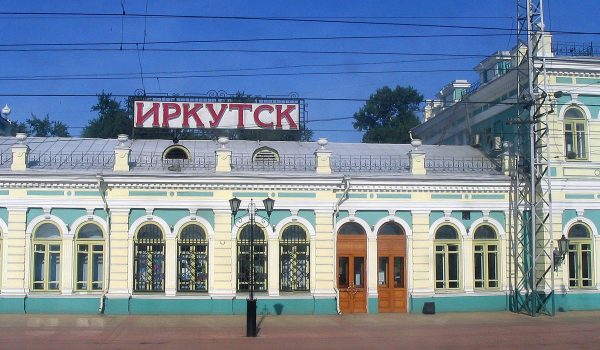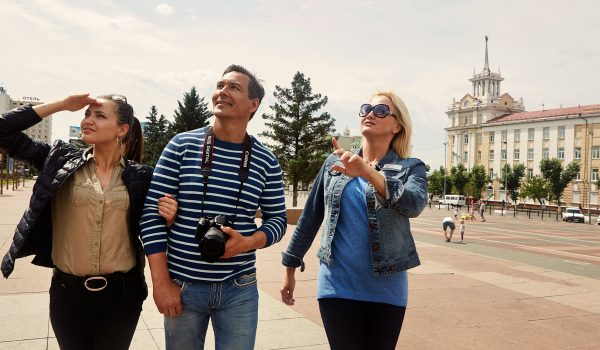Ulaanbaatar – formerly anglicised as Ulan Bator – is the capital of the independent Republic of Mongolia and lies within the Tuul River valley, bordering the Bogd Khan Uul National Park. Originally a centre for nomadic Buddhists, it became a permanent site in the eighteenth century. Heavy-handed Soviet Russian control in the twentieth century led to a religious purge. A vibrant conjunction of traditional and twenty-first century lifestyles typify the modern city, which bears little resemblance to the windswept Soviet-style outpost encountered by travellers some thirty years ago. (Source: Wikipedia)
To paraphrase Lonely Planet, “Ulaanbaatar is a sprawling, industrialised city of commerce, wild traffic, sinful nightlife and bohemian counterculture. The contrasts are intriguing: Armani-suited businessmen rub shoulders with mohawked punks and del-clad nomads fresh off the steppes; one minute you’re dodging a Hummer and the next you’re entranced by chanting Buddhist monks at Gandan. It’s the coldest capital in the world, but come summer the city bursts into life after slumbering through a long winter.”
“Ulaanbaatar is not always the easiest city to navigate, but with a little patience travellers can take care of all their logistical needs, visit world-class museums, watch traditional theatre, sample international cuisine and party till three in the morning. Indeed, this ever-changing city may be the biggest surprise of your Mongolian adventure.”
Our sightseeing begins with a visit to the Tibetan-style Gandan Khiid Monastery, one of the few buildings in Ulaanbaatar to pre-date World War II and one of few monasteries to survive the Soviet purge. The full name, Gandantegchinlen, translates roughly to ‘the great place of complete joy’. We move on to the National Museum, which holds a number of fascinating displays of traditional Mongol clothing and weaponry, as well as exhibits charting the empire building of Chinggis Khaan (Genghis Khan). There will also be a stop at the Main Square to see the statues of Chinggis Khaan and Sukhbaatar, two of Mongolia’s national heroes, before finally stopping at the Zaisan Memorial for views of the city.
Travellers visiting Ulaanbaatar around 11-12 July 2019 have the opportunity to witness the spectacular annual Naadam Festival of Mongol culture and traditional sports: archery, horse-racing and wrestling. Towns and villages across the country also stage scaled-down local Naadam festivals from June through August.
For those with more time to spare, the forests and craggy rock formations of the Gorkhi-Terelj National Park, east of the city, offer a popular daytrip destination from Ulaanbaatar. Activities possible there include horse and camel riding, archery, hiking camping and visiting nomadic families in their gers.
Alternative stopover options
Hustain Nuruu National Park
Full day excursion outside Ulaanbaatar to the Hustain Nuruu National Park, home to the last remaining species of wild horse, the takhi – commonly known as Przewalski’s Horse. Twenty-five years after becoming extinct in the wild, the takhi was reintroduced to the Mongolian steppe from zoo populations by the Foundation for the Preservation and Protection of the Przewalski’s Horse. Leaving the capital you will start to see nomad tents, your first glimpse of the nomadic lifestyle. On arrival, explore the scenic locations where these Asian wild horses graze, a result of the conservation programme. Later, a simple lunch will be provided. After lunch at the park, visit a local horseman’s family to see their way of life, and traditions. Return to Ulaanbataar for overnight.
Altai Tavan Bogd National Park
Transfer to the airport for the 3 hour flight to Bayan-Olgii Province. Upon arrival at the airport in Olgii you will be transferred to the Altai Tavan Bogd National Park, a spectacular reserve encompassing mountain landscapes, numerous glaciers and freshwater lakes. Drive to Baga Oigor Valley to view one of the largest rock art galleries in Asia. The petroglyphs date back to the Stone and Bronze ages and are listed as a UNESCO World Heritage Site spanning an area of 15km. Here you will see carvings depicting wild and domestic animals and scenes of human life, including hunting, animal husbandry and religious rituals. Camp overnight before returning next day to Ulaanbaatar.
Follow in the footsteps of centuries-old tradition and absorb part of the Eagle Huntress story
The Mongolian Eagle Hunters Festival, 30 Sept – 3 Oct each year, has become better known due to the success of the movie, ‘Eagle Huntress’. This beautiful movie and portrays not only a true and wonderful story, but the incredible landscape of this magnificent region of far western Mongolia.
The success of the movie and resulting increase in people wanting to witness this event is a benefit for many, but also creates problems due to the limited capacity to cater for visitors.
The first hurdle is to get a seat on the domestic flight to this remote region. Whilst the aircraft are operated by proper airlines they are the smaller twin turbo prop variety and seats are limited. If you miss out then it is a long (read: several days) bumpy drive to reach the festival venue.
Day 1 of Eagle Hunters Festival
Today you will witness Kazakh hunters in all their glory – a parade of hunters on horseback with their prized eagles perched on their arms. After the parade, each hunter will demonstrate how well their bird obeys his commands by placing his eagle on a nearby cliff edge and calling it from below. A spectacular sight! In the afternoon, watch an exciting race of Amblers, a highly valued type of Mongolian horse known for its quick canter. The festival continues into the evening, and you will have the opportunity to attend a local concert where there will be performances of traditional Kazakh songs and dances. Overnight in Olgii.
Day 2 of Eagle Hunters Festival
After breakfast head out for another fascinating day at the Eagle Festival where you will see trained golden eagles displaying their speed and agility. To test their eagles’ skills, hunters drag a fox skin behind their horse, and the fastest eagle to land on the skin is considered the best hunter. Overnight Olgii.


